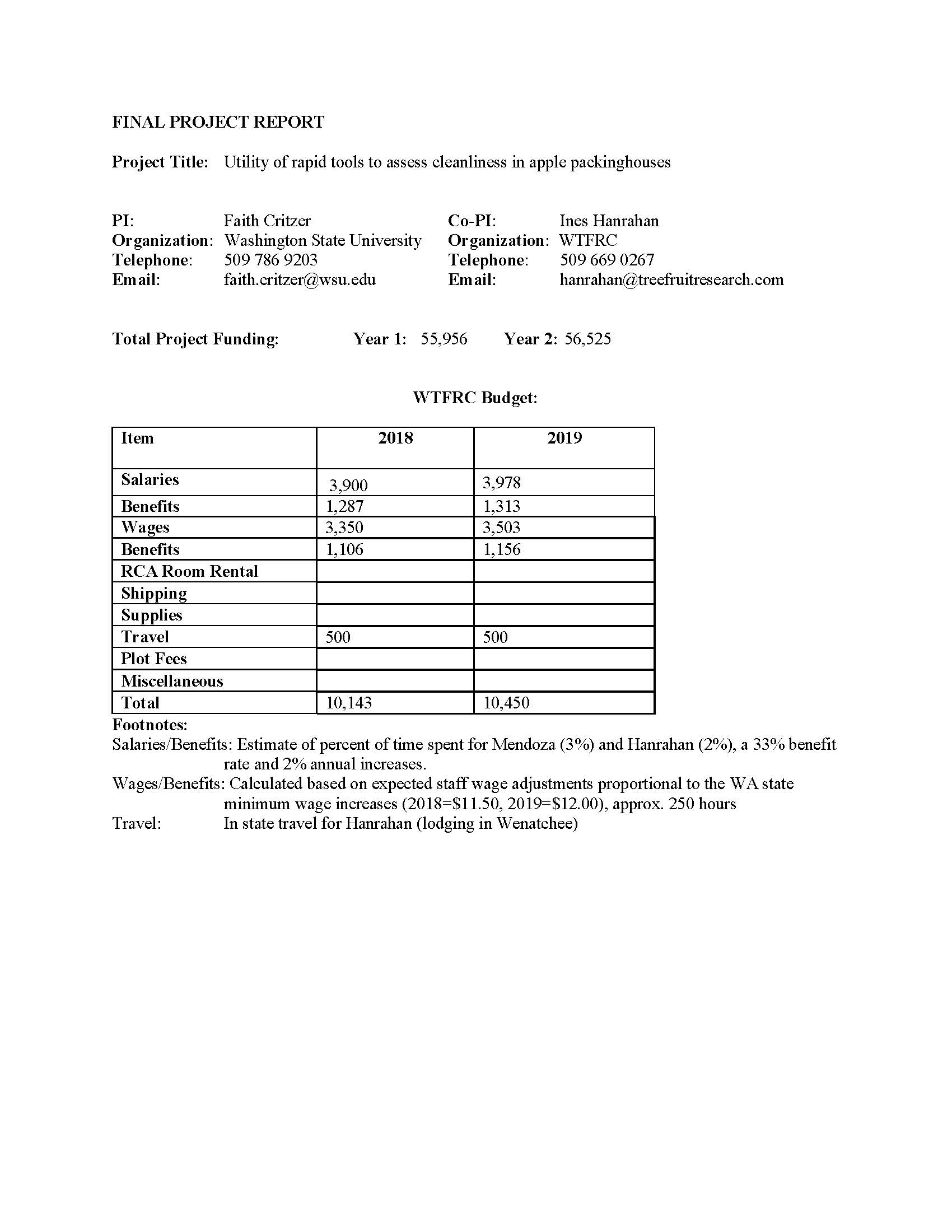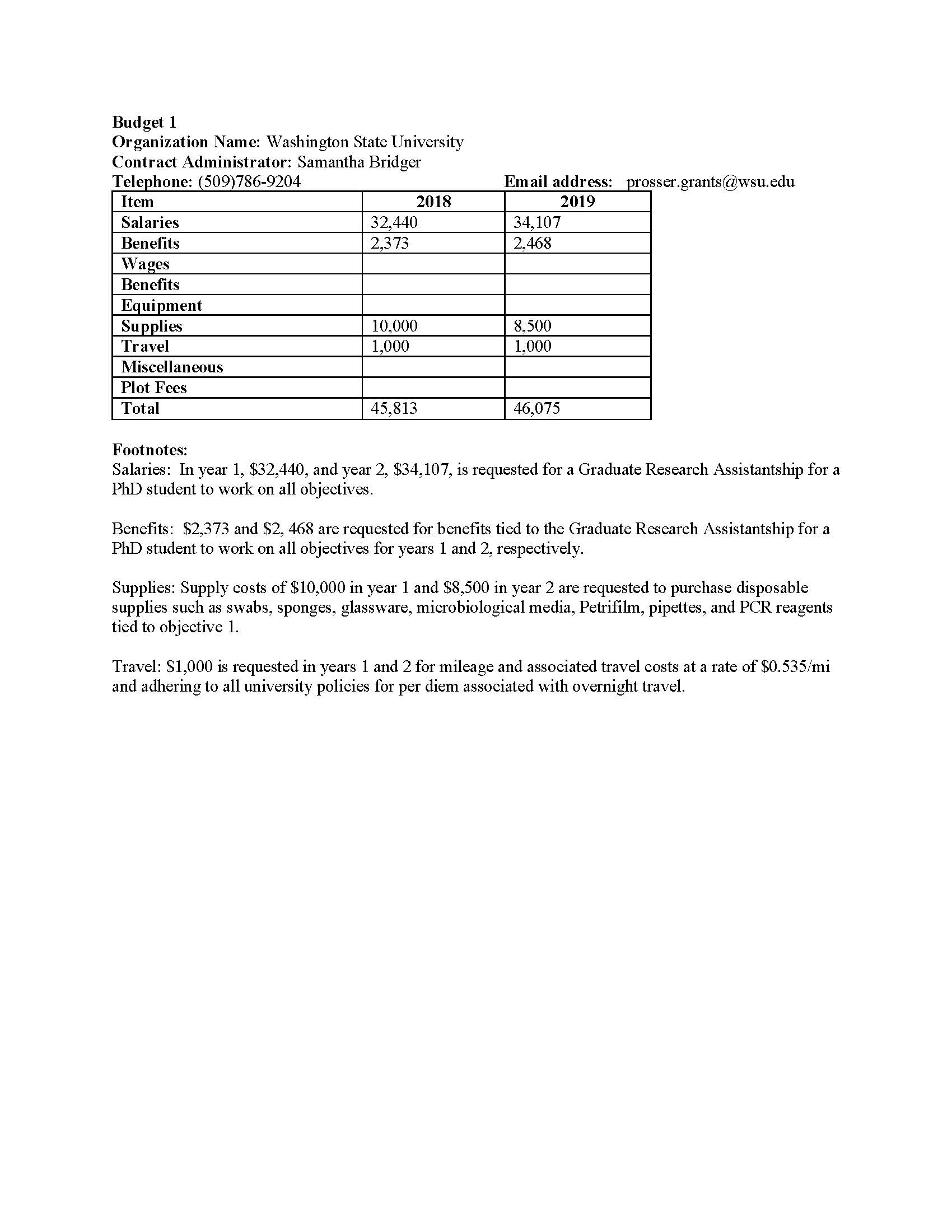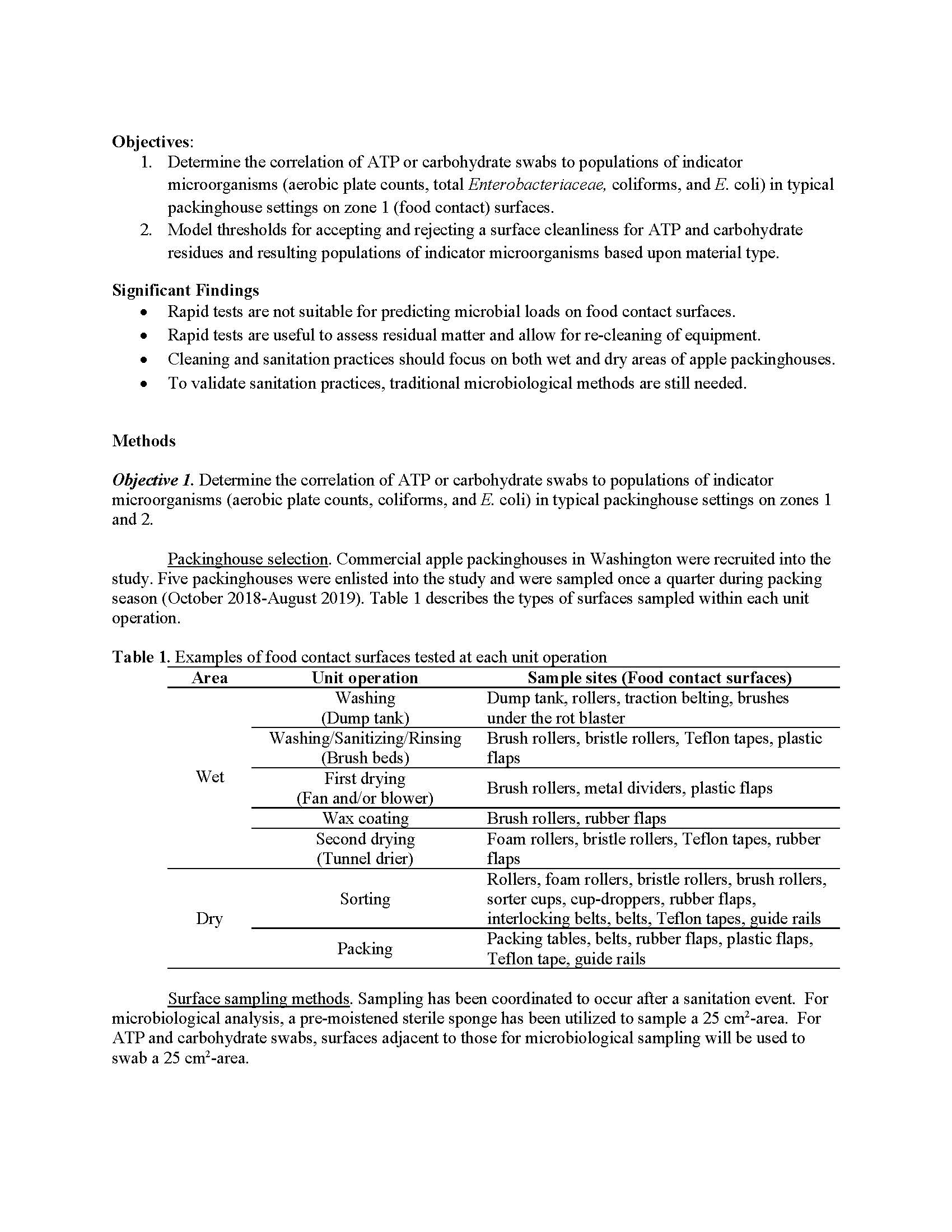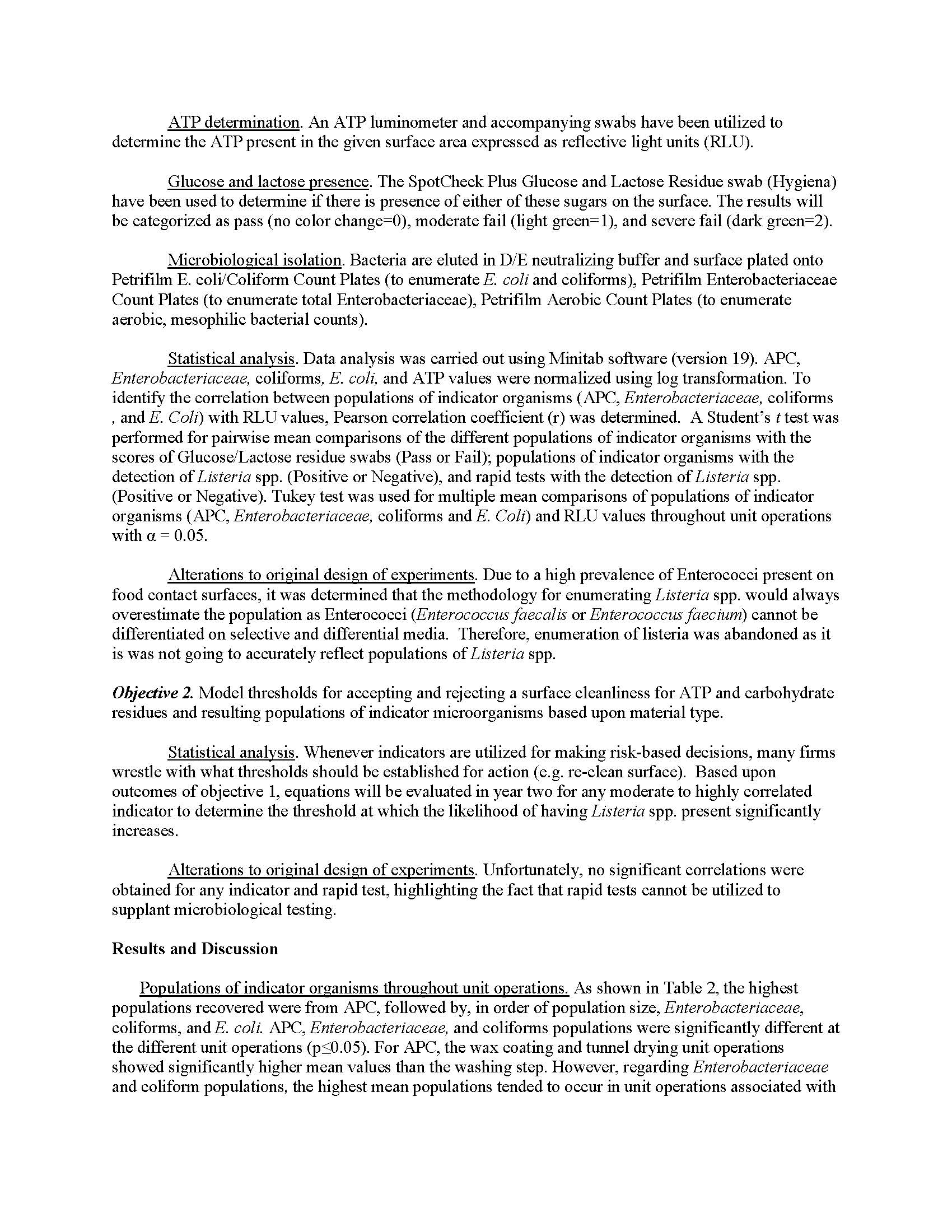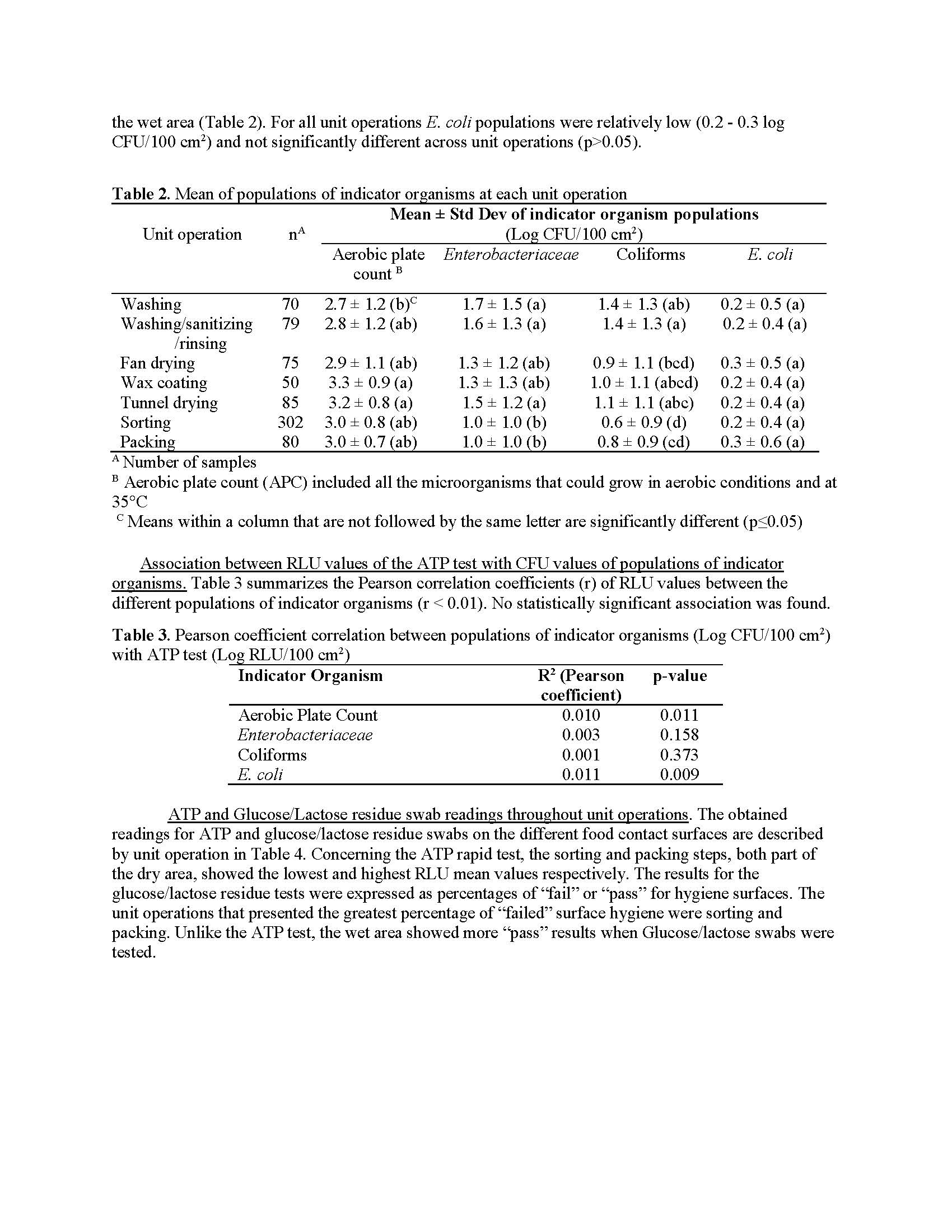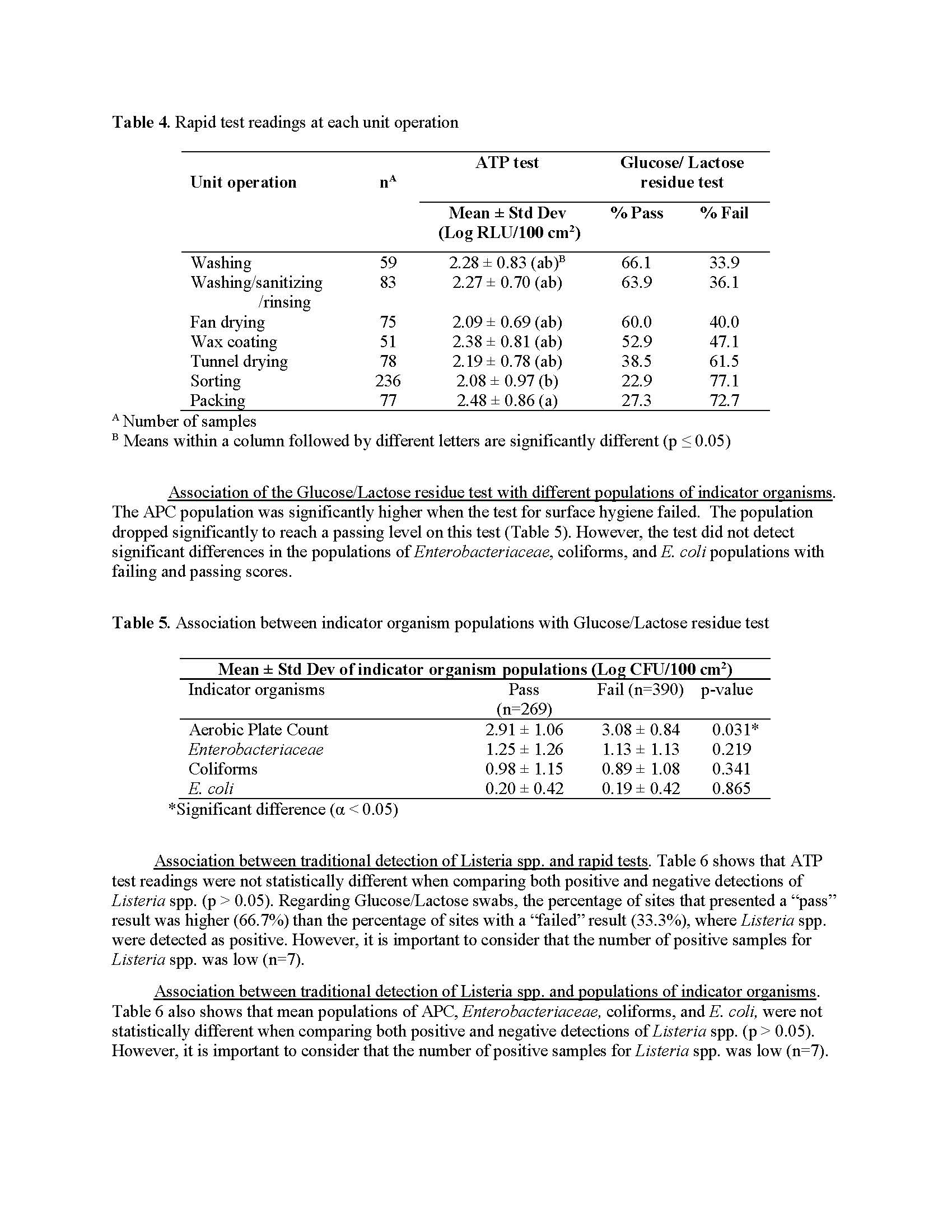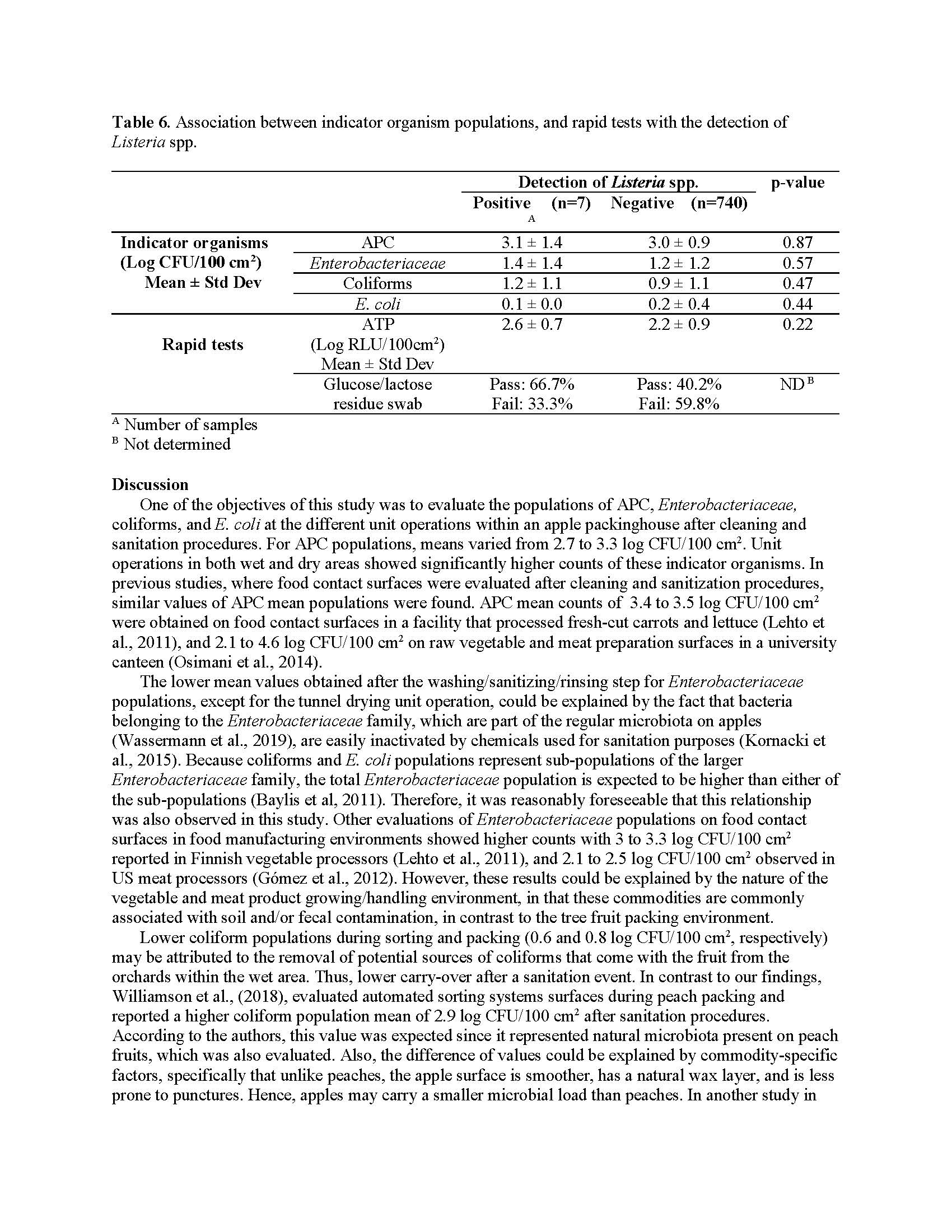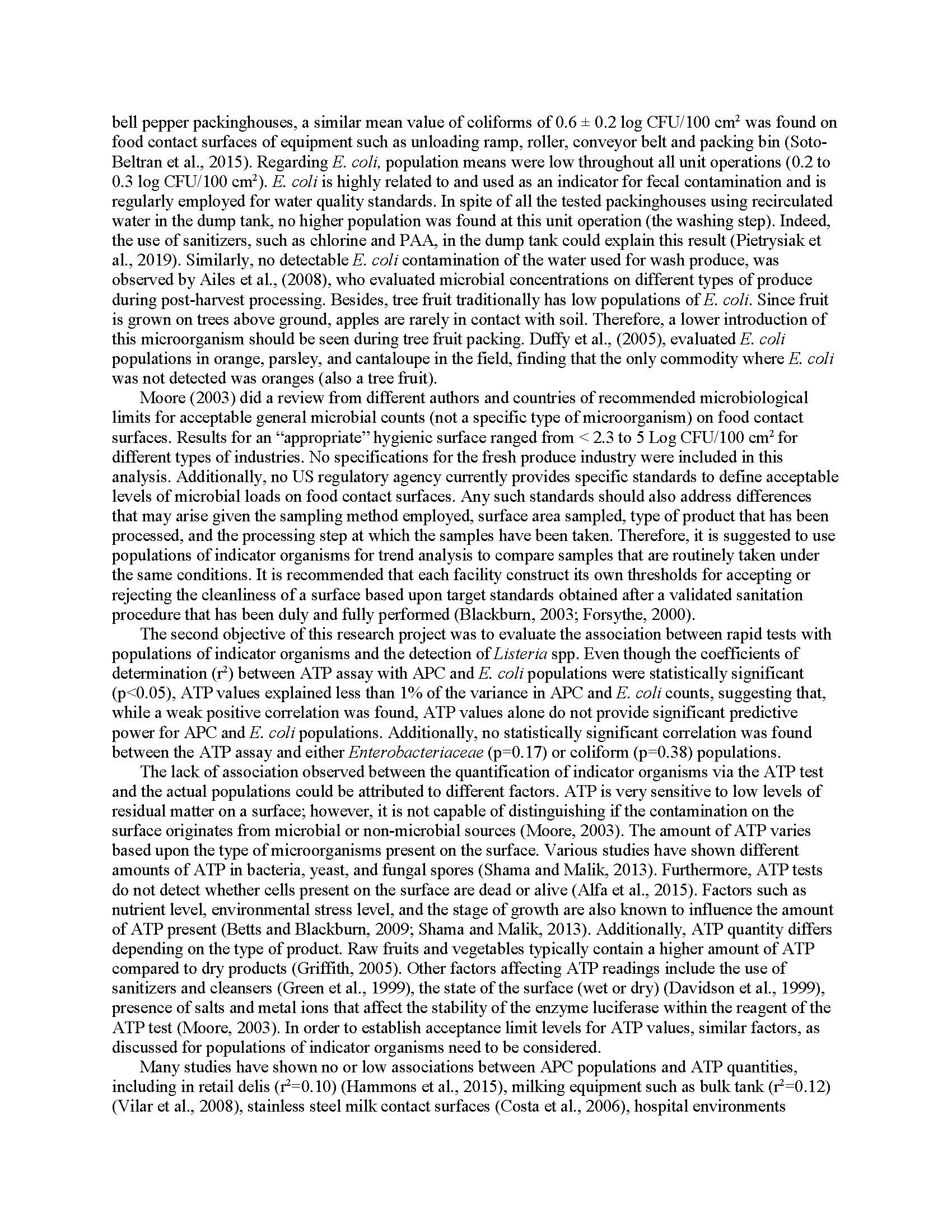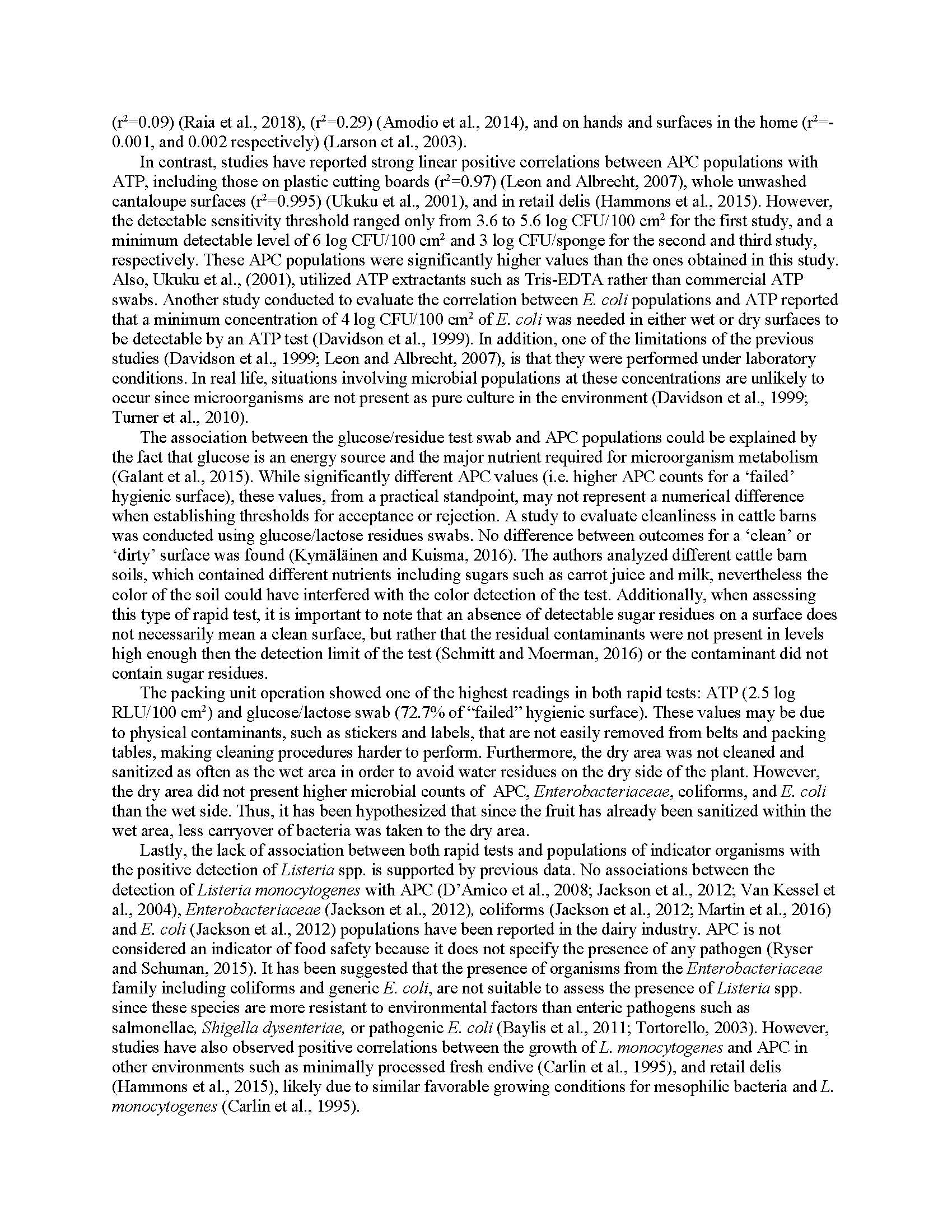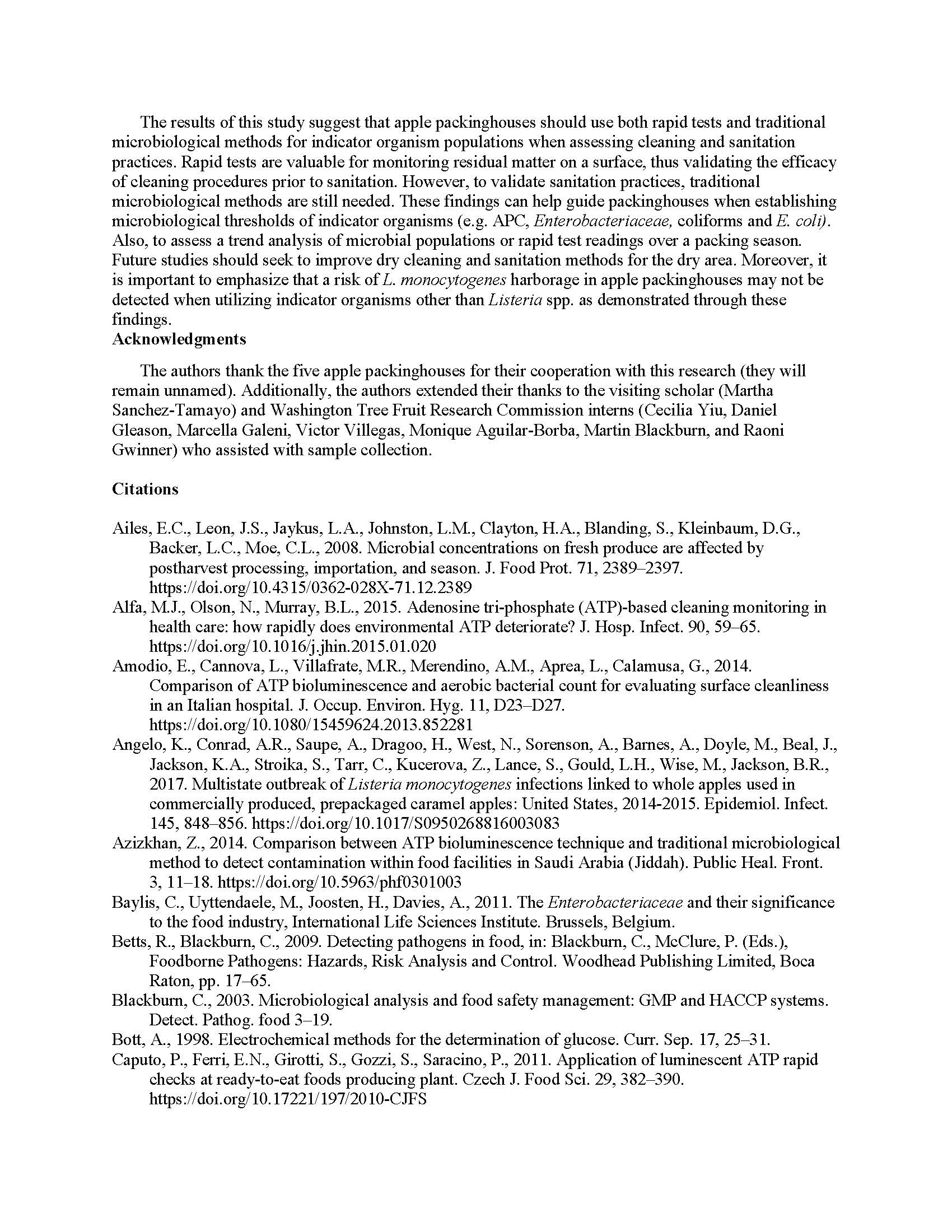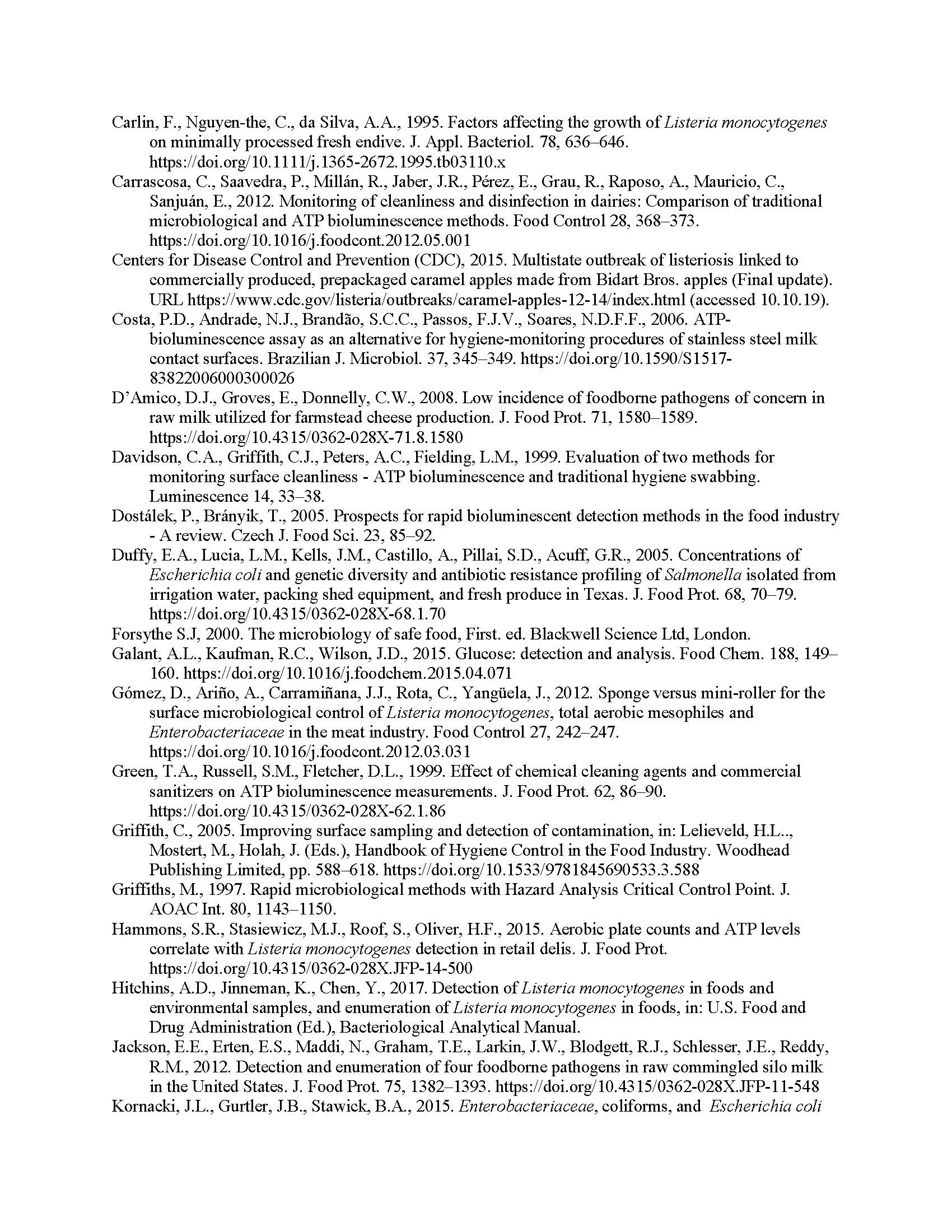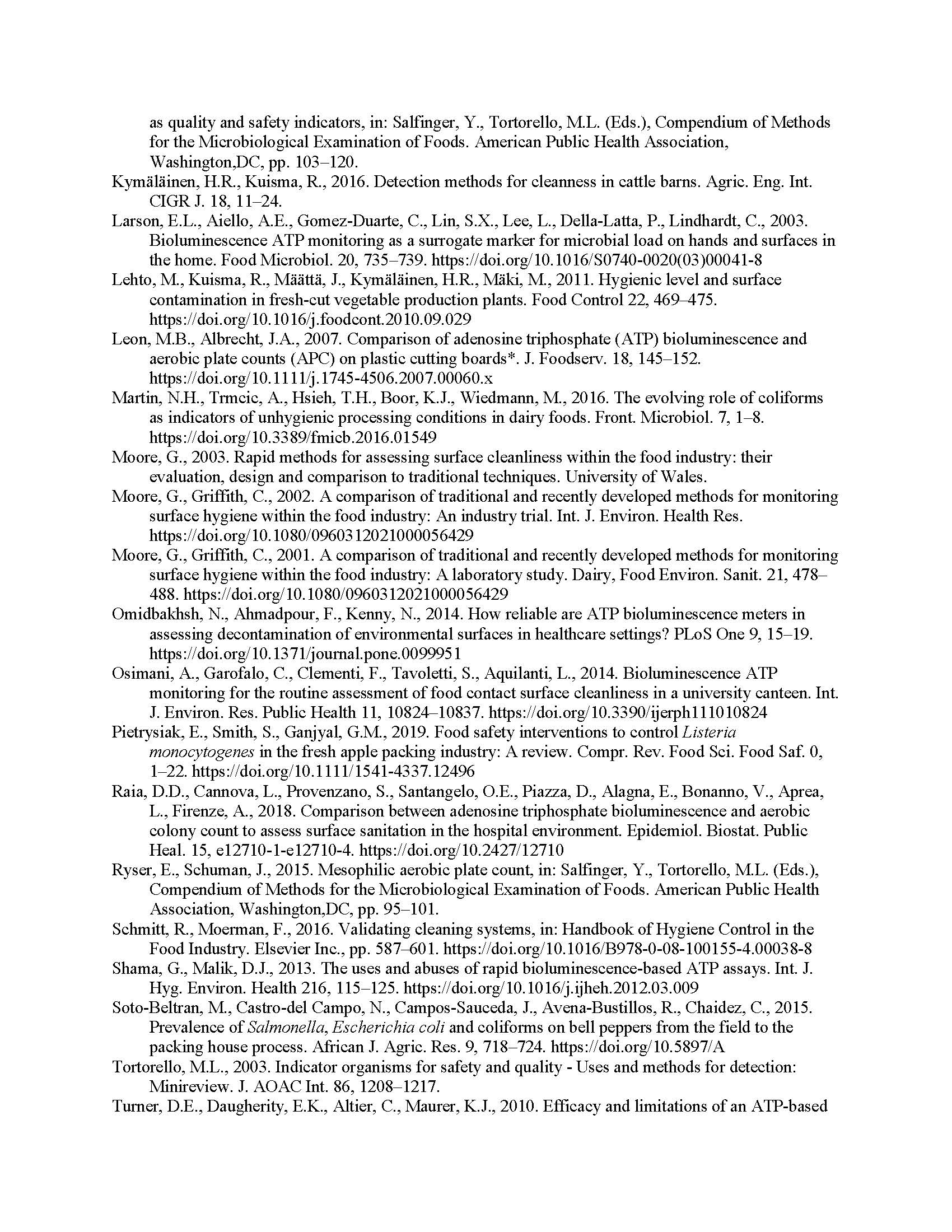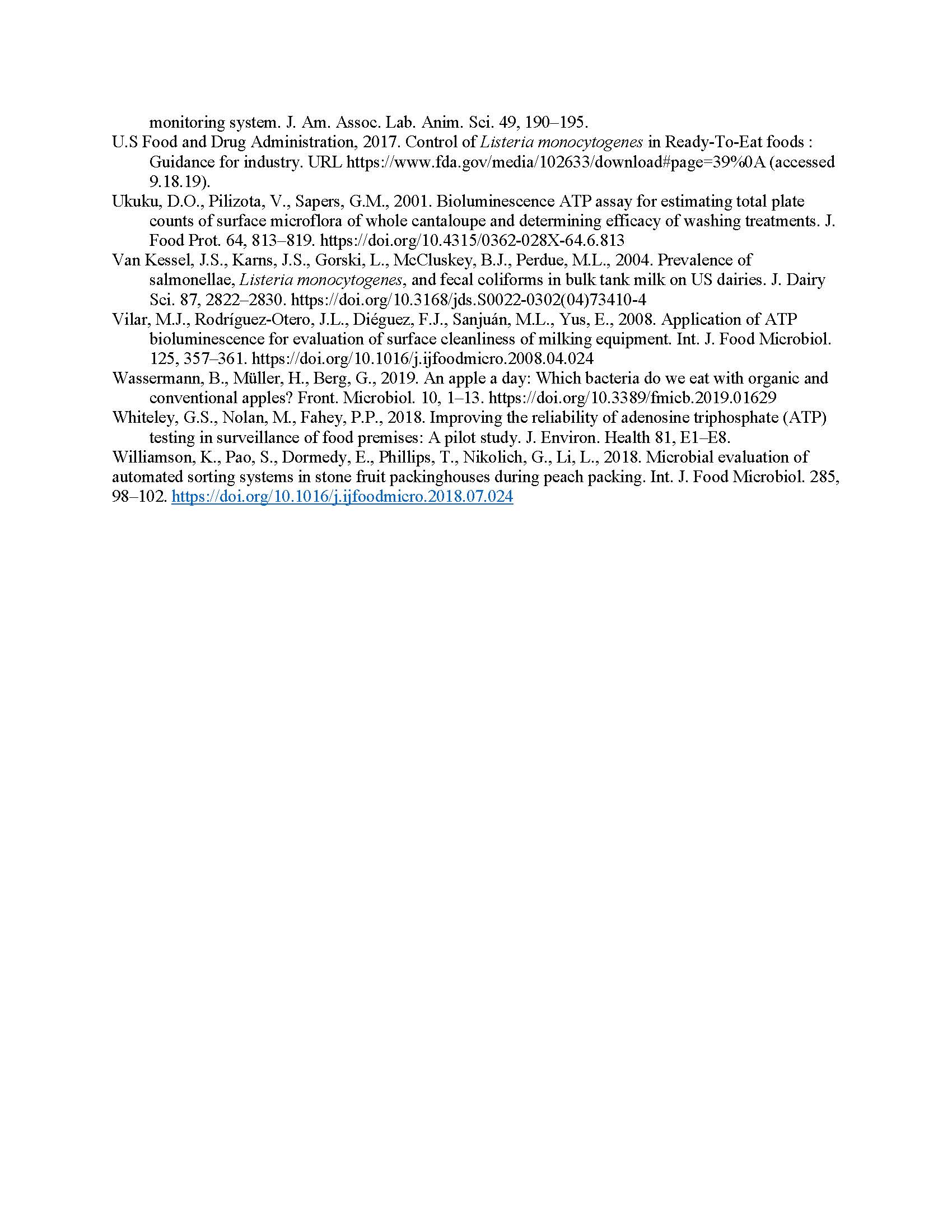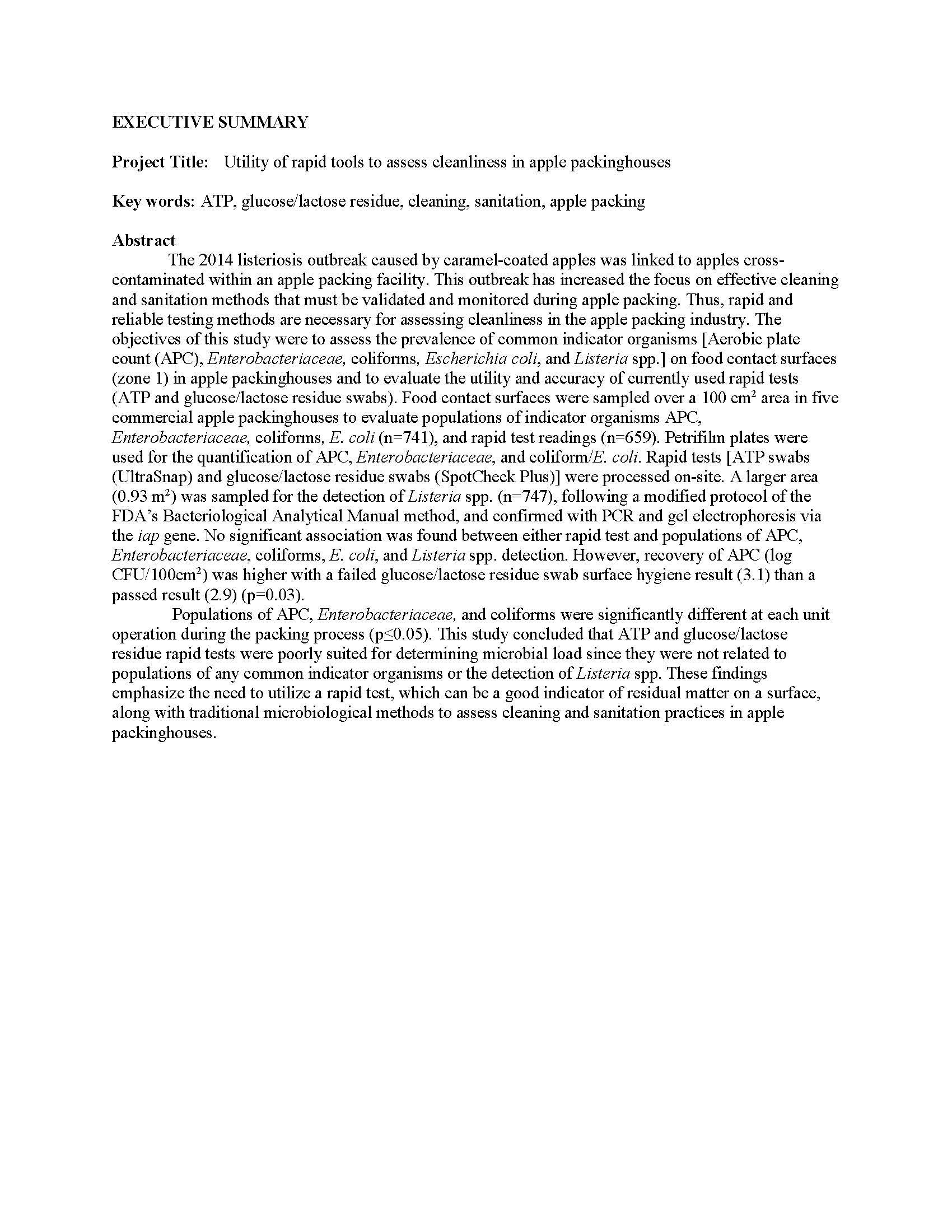Utility of rapid tools to assess cleanliness in apple packinghouses
Author: Faith Critzer, Ines Hanrahan
Published: 2021
Summary: The 2014 listeriosis outbreak caused by caramel-coated apples was linked to apples cross-contaminated within an apple packing facility. This outbreak has increased the focus on effective cleaning and sanitation methods that must be validated and monitored during apple packing. Thus, rapid and reliable testing methods are necessary for assessing cleanliness in the apple packing industry. The objectives of this study were to assess the prevalence of common indicator organisms [Aerobic plate count (APC), Enterobacteriaceae, coliforms, Escherichia coli, and Listeria spp.] on food contact surfaces (zone 1) in apple packinghouses and to evaluate the utility and accuracy of currently used rapid tests (ATP and glucose/lactose residue swabs). Food contact surfaces were sampled over a 100 cm2 area in five commercial apple packinghouses to evaluate populations of indicator organisms APC, Enterobacteriaceae, coliforms, E. coli (n=741), and rapid test readings (n=659). Petrifilm plates were used for the quantification of APC, Enterobacteriaceae, and coliform/E. coli. Rapid tests [ATP swabs (UltraSnap) and glucose/lactose residue swabs (SpotCheck Plus)] were processed on-site. A larger area (0.93 m2) was sampled for the detection of Listeria spp. (n=747), following a modified protocol of the FDA’s Bacteriological Analytical Manual method, and confirmed with PCR and gel electrophoresis via the iap gene. No significant association was found between either rapid test and populations of APC, Enterobacteriaceae, coliforms, E. coli, and Listeria spp. detection. However, recovery of APC (log CFU/100cm2) was higher with a failed glucose/lactose residue swab surface hygiene result (3.1) than a passed result (2.9) (p=0.03). Populations of APC, Enterobacteriaceae, and coliforms were significantly different at each unit operation during the packing process (p≤0.05). This study concluded that ATP and glucose/lactose residue rapid tests were poorly suited for determining microbial load since they were not related to populations of any common indicator organisms or the detection of Listeria spp. These findings emphasize the need to utilize a rapid test, which can be a good indicator of residual matter on a surface, along with traditional microbiological methods to assess cleaning and sanitation practices in apple packinghouses.
Keywords:

